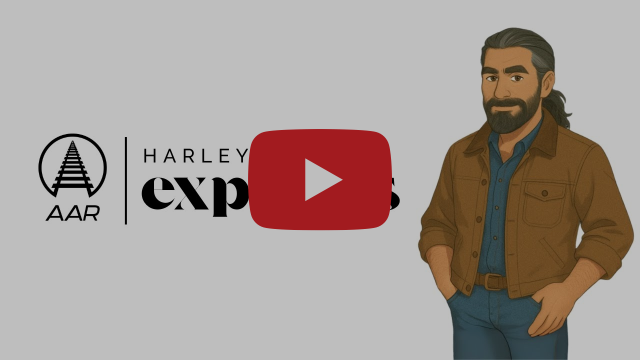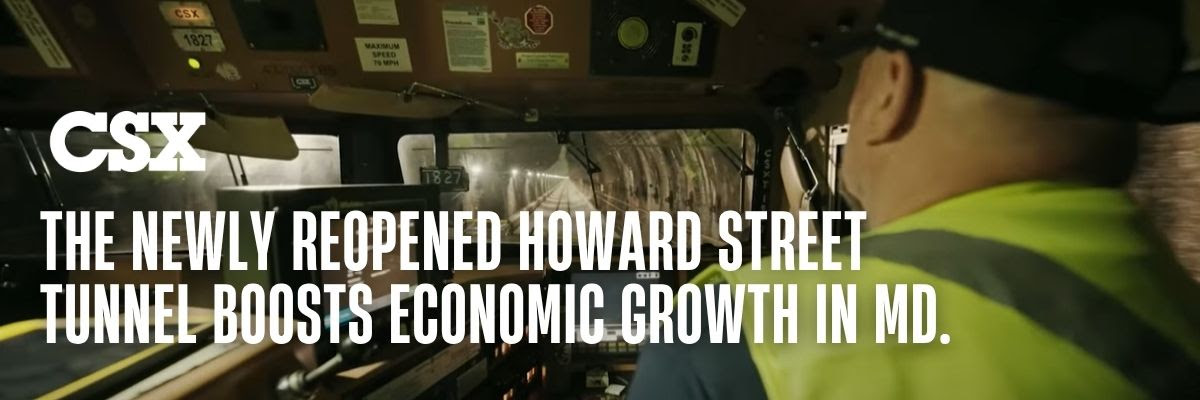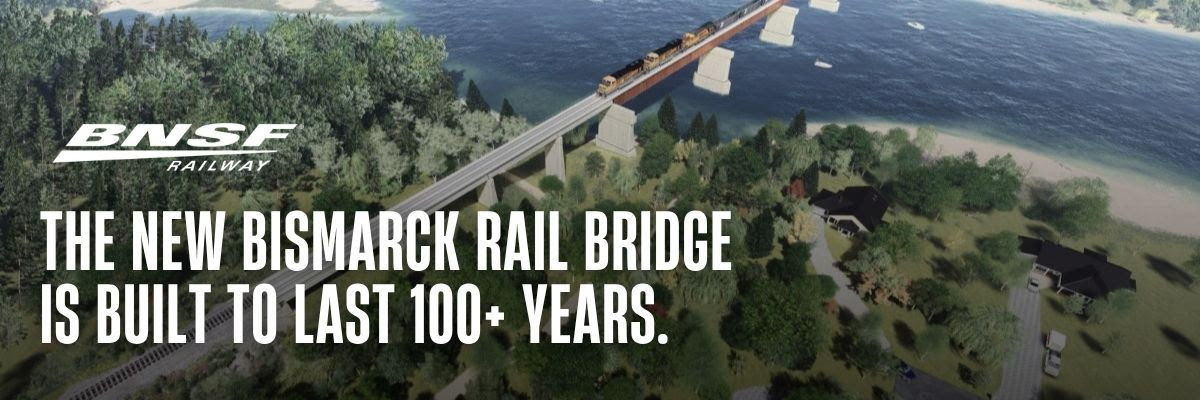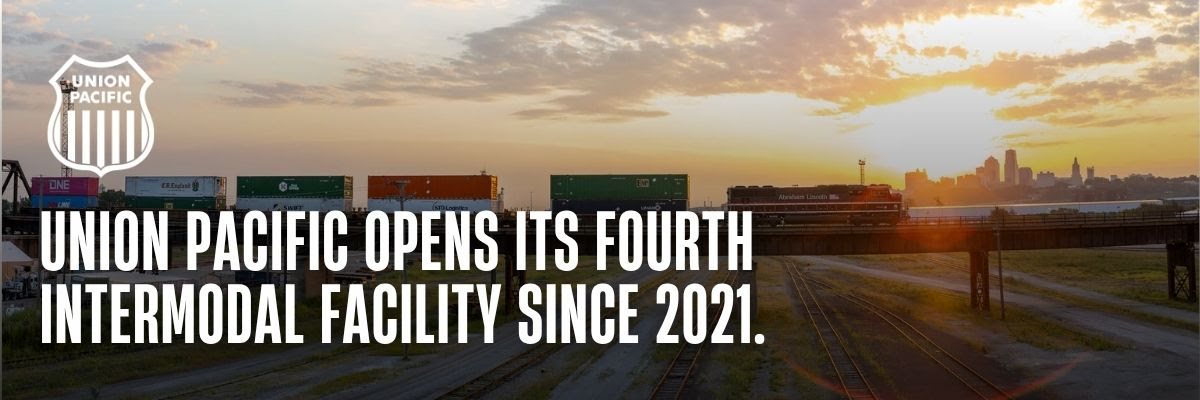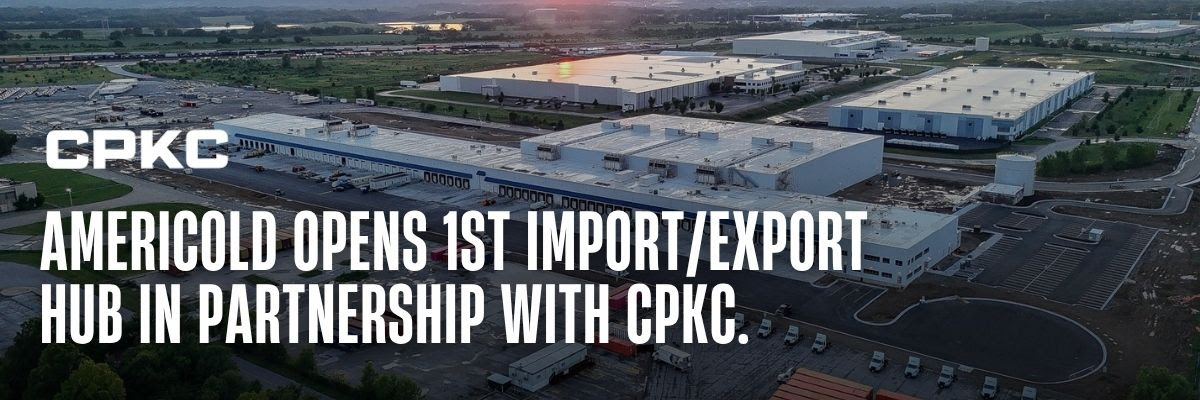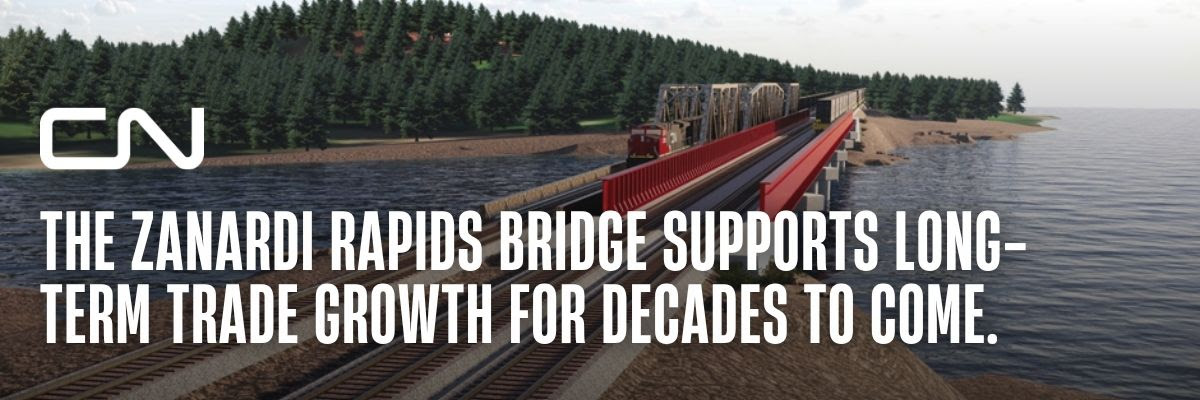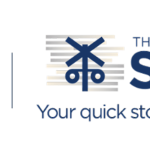HEY, I’M HARLEY – The Signal – 10/14/25
Hey there, I’m Harley. 
Born from the imaginations of the Signal editors and named after Congressman Harley Orrin Staggers himself, I’m your narrator for the brand-new Harley Explains video series—launching today, on the 45th anniversary of the Staggers Rail Act.
Passed in 1980, the Staggers Act partially deregulated the freight rail industry’s economic oversight, giving railroads more freedom to set rates, negotiate contracts, and operate efficiently—sparking a renaissance in private investment, safety improvements, and network reliability that continues today.
I’m super excited to be taking over this week’s Signal. Below, you’ll find a quick interview to get to know me better, one of my very first explainer videos, a look at recent Class I investments made possible by the Staggers Act, and some recent events I think you might dig.
 Check out my intro video above.
Check out my intro video above.
My Little Podcast Moment
I sat down to talk with one of the Signal editors. Check it out in the video above. You can also read the transcript here. Man, are podcasts fun. Maybe I should start my own?
Let’s Talk Staggers.
Ok, here is a video from my Harley Explains series that goes into a little more detail on The Staggers Act of 1980. Check out the other videos I just released today at AAR.org/Harley. They range from Railroad 101 to freight rail’s impact on the supply chain to employee safety. All short, quick hits.
Forward-Thinking Policy Then, Major Investments Now.
Enough about me. Let’s shift the spotlight to the real heavy hitters—America’s Class I railroads. They’re making serious investments back into the national freight network that keeps this country moving. We’re talking big upgrades: more capacity, better efficiency, and smarter infrastructure. And none of it happens without rational policy paving the way.
CSX’s $450 million Howard Street Tunnel expansion clears a key I-95 bottleneck, enables double-stacked intermodal trains, and boosts Port of Baltimore capacity by 160,000 containers annually—creating 13,000 jobs across the region.
(Psst. If you’re ever in Baltimore, check out Mama’s On the Half Shelf in Canton. Chef’s kiss.)
BNSF is replacing its 140-year-old Missouri River bridge between Bismarck and Mandan, ND, with a modern structure built for heavier loads and safer inspections—preserving the river’s ecosystem while supporting more than 1,100 local jobs and $1.5 billion in regional investment.
Union Pacific’s Kansas City Intermodal Terminal (KCIT) is its fourth new facility since 2021, offering truck-competitive transit times, precision gate tech, and 25% faster throughput—shifting freight off highways and into a cleaner, more efficient rail network.
CPKC and Americold opened a $120 million Import-Export Hub in Kansas City, MO, anchoring the Mexico Midwest Express (MMX)—the only single-line refrigerated rail service between the U.S. and Mexico. The hub streamlines food flow, eases congestion, and creates nearly 190 jobs.
Canadian National’s investments in the Zanardi Rapids Bridge at the Port of Prince Rupert will eliminate a key bottleneck and add new track in both directions. The new three-track bridge will support decades of trade growth atone of North America’s fastest-growing gateways.
After Hurricane Helene, Norfolk Southern restored freight service to Asheville, NC, without federal aid—rebuilding 128 locations, replacing the Pigeon River Bridge, and clearing more than 2,000 trees. Next up: rebuilding the Old Fort–Grovestone line, adding 16 miles of track to strengthen future resilience.
(Not to get all teacher on you, but this is something I want folks to really understand; freight rail investments aren’t just about today, they’re about being prepared for what could happen in the future.)
Innovation Track
I also wanted to mention this cool event that just happened in Washington, DC. We got some policymakers, industry leaders, and technology innovators together to discuss a pretty important question: Can our regulatory system keep pace with the rapid evolution of transportation technology?
The event, hosted by the AAR and Widehall, had a compelling lineup, including Sen. Deb Fischer (R-NE) and Rep. Bruce Westerman (R-AR). The message was loud and clear:
America must modernize its approach to regulation if it wants to remain a global leader in efficient, sustainable, and safe freight transportation.
Find the full stream, video snippets and quotes here.
Tracks, Trucks & Tech: Securing the Future of Freight
Freight Waves just dropped a new episode of What the Truck!? (side note, I love that name lol). AAR’s Ian Jefferies and MxV Rail’s Kari Gonzales spotlighted how smart policy and new technologies are shaping the future of freight rail.
From mode-neutral innovation and cargo theft prevention to climate resilience and intermodal collaboration, the episode highlighted how railroads are driving progress and partnering across modes to build a stronger, more efficient transportation network.
New from NTU: What Staggers Taught Us—And Why It Still Matters
The National Taxpayers Union spotlights how the Staggers Rail Act rescued a failing industry and unleashed decades of private investment, productivity gains, and lower real rates for shippers.
With surface transportation reauthorization on the horizon, NTU urges a “do no harm” approach that avoids rolling back Staggers principles through new mandates or re-regulation that would raise costs for businesses, consumers, and taxpayers. Worth a read as Congress weighs what’s next.

Well that’s it for me, I need to get to my birthday party. Thanks so much to the Signal team for letting me take over this week! And I look forward to releasing new Harley Explains videos in the future. 
INDUSTRY READS
Wall Street Journal
U.S. Warehouse Vacancies Steady as Demand Rises With Less New Space
Trains
BNSF-CSX interline intermodal service off to fast start
Newsweek
America’s Trucking Industry Is in Deep Trouble
Journal of Commerce
Norfolk Southern tweaks international services from West, East coasts
DC Journal
What Baseball Teaches Us About the Future of Transportation (opinion)


